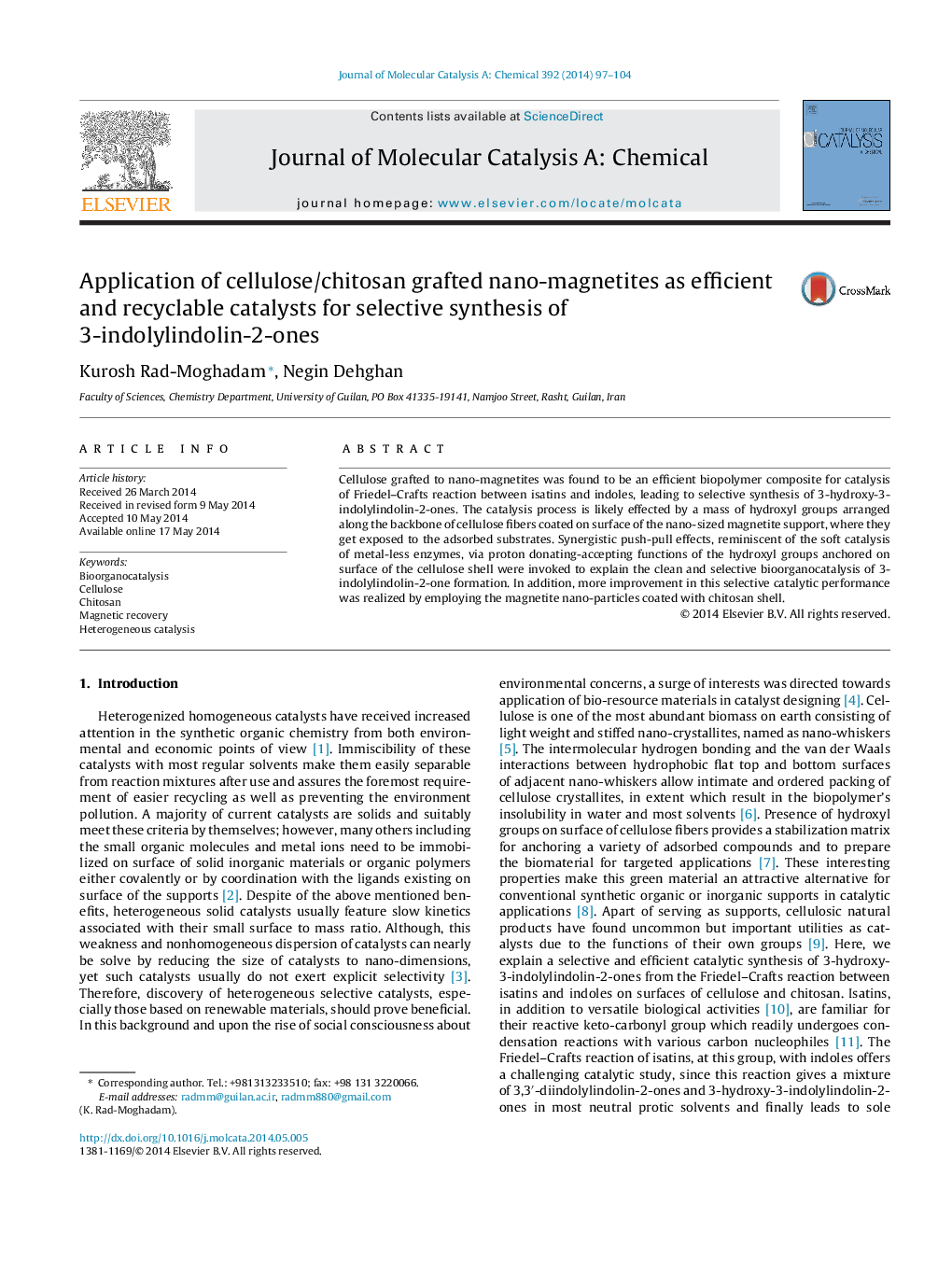| Article ID | Journal | Published Year | Pages | File Type |
|---|---|---|---|---|
| 65141 | Journal of Molecular Catalysis A: Chemical | 2014 | 8 Pages |
•Fine and naturally consistent cellulosic-grafted nano-magnetites were prepared.•A selective catalytic synthesis of 3-indolyl-3-hydroxy-2-oxindoles was achieved.•The catalysis is a typically synergistic proton donating-accepting of hydroxyl groups.•The efficiency of catalyst retains even after several recycling.
Cellulose grafted to nano-magnetites was found to be an efficient biopolymer composite for catalysis of Friedel–Crafts reaction between isatins and indoles, leading to selective synthesis of 3-hydroxy-3-indolylindolin-2-ones. The catalysis process is likely effected by a mass of hydroxyl groups arranged along the backbone of cellulose fibers coated on surface of the nano-sized magnetite support, where they get exposed to the adsorbed substrates. Synergistic push-pull effects, reminiscent of the soft catalysis of metal-less enzymes, via proton donating-accepting functions of the hydroxyl groups anchored on surface of the cellulose shell were invoked to explain the clean and selective bioorganocatalysis of 3-indolylindolin-2-one formation. In addition, more improvement in this selective catalytic performance was realized by employing the magnetite nano-particles coated with chitosan shell.
Graphical abstractFigure optionsDownload full-size imageDownload high-quality image (131 K)Download as PowerPoint slide
